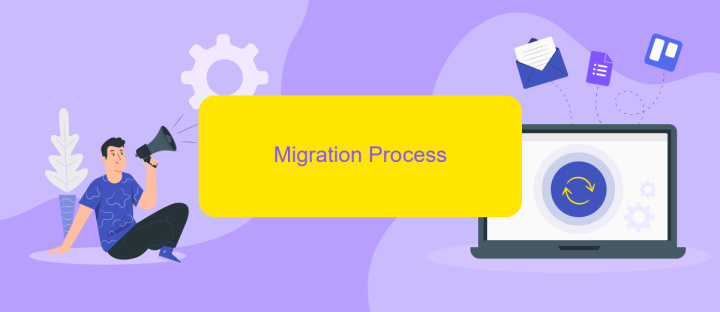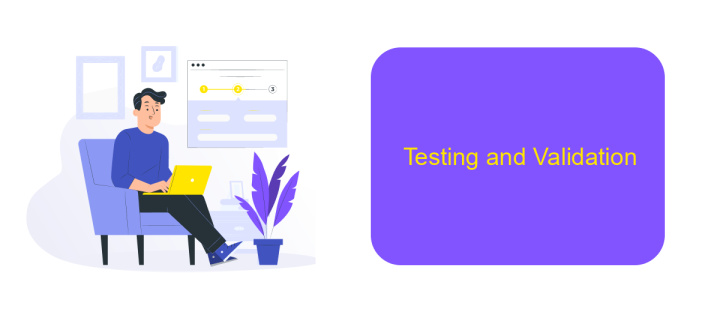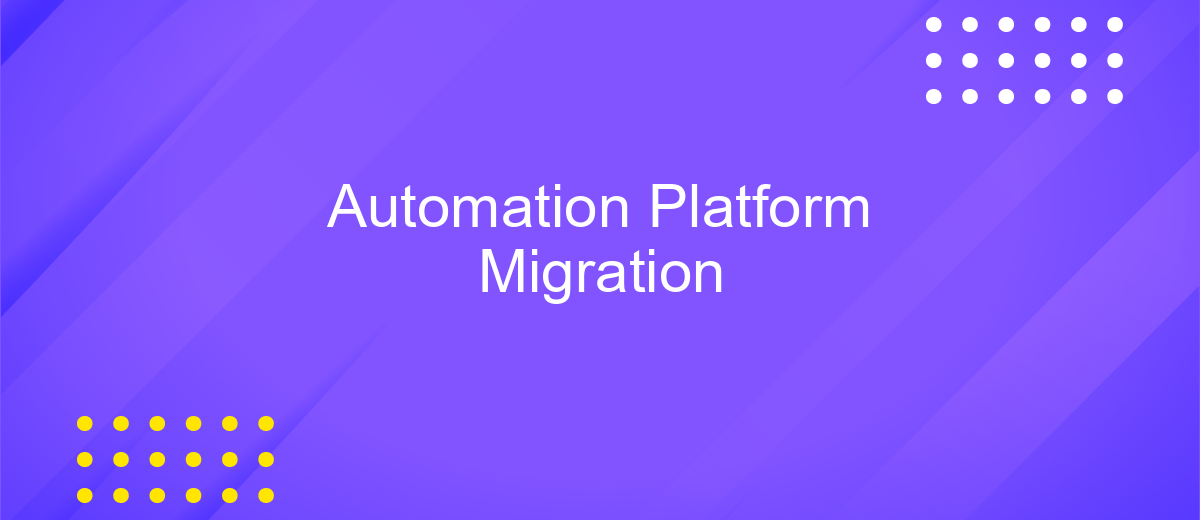Automation Platform Migration
Migrating to a new automation platform is a pivotal step for organizations aiming to enhance efficiency and streamline operations. This transition involves careful planning and execution to minimize disruptions and maximize benefits. In this article, we will explore the key considerations and strategies for a successful migration, ensuring that your organization can leverage the full potential of advanced automation technologies to stay competitive in today's fast-paced market.
Introduction
In today's rapidly evolving technological landscape, organizations are increasingly seeking ways to enhance their operational efficiency and agility. One significant strategy that businesses are adopting is the migration to automation platforms. This process involves transitioning from legacy systems to more advanced, scalable, and efficient automation solutions. Such migrations are crucial for companies aiming to stay competitive, reduce operational costs, and improve service delivery.
- Enhanced scalability and flexibility
- Improved process efficiency
- Reduction in operational costs
- Better integration with modern technologies
- Increased data security and compliance
Successfully migrating to a new automation platform requires careful planning and execution. Organizations must assess their current systems, identify the best-fit technology, and implement a structured transition strategy. This journey, while challenging, offers substantial rewards in terms of productivity and innovation. By embracing modern automation platforms, businesses can unlock new opportunities for growth and remain resilient in the face of technological advancements.
Planning and Preparation

Effective planning and preparation are crucial for a successful automation platform migration. Begin by conducting a comprehensive assessment of your current system to identify dependencies, bottlenecks, and areas for improvement. Establish a clear migration strategy that outlines the objectives, timeline, and resources needed. Engage stakeholders early in the process to ensure alignment and gather valuable insights. Additionally, evaluate the compatibility of existing tools and technologies with the new platform to minimize disruptions.
Integration is a key aspect of migration planning. Utilizing services like ApiX-Drive can streamline the integration process by automating data transfer and synchronization between different systems. This ensures a seamless transition and reduces the risk of data loss. Prioritize testing and validation to identify potential issues before full-scale implementation. Develop a detailed rollback plan as a contingency measure. Finally, provide adequate training for your team to familiarize them with the new platform and its features, ensuring a smooth adaptation and continued productivity.
Migration Process

The migration process to a new automation platform is a critical phase that requires meticulous planning and execution. It involves transitioning existing workflows, data, and systems to a more efficient and scalable platform. This process is essential to ensure minimal disruption to ongoing operations while maximizing the benefits of the new system.
- Assessment: Evaluate the current system, identify key requirements, and establish clear objectives for the migration.
- Planning: Develop a detailed migration plan, including timelines, resource allocation, and risk management strategies.
- Execution: Implement the migration plan by transferring data, configuring new workflows, and integrating with existing systems.
- Testing: Conduct thorough testing to ensure all components function correctly and meet performance standards.
- Deployment: Roll out the new platform to users, providing necessary training and support for a smooth transition.
- Review: Analyze the migration process to identify lessons learned and opportunities for future improvements.
Successful migration to an automation platform not only enhances operational efficiency but also provides a robust foundation for future growth and innovation. By following a structured approach, organizations can mitigate risks and ensure a seamless transition that aligns with their strategic goals.
Testing and Validation

Testing and validation are critical phases in the migration to an automation platform, ensuring that the transition is smooth and successful. During these stages, it is essential to verify that all functionalities are operating as expected and that the new platform meets business requirements. Proper testing mitigates risks associated with migration, such as data loss or system downtime.
To achieve comprehensive testing, a structured approach should be adopted. This includes developing a detailed testing plan that outlines the scope, objectives, and methodologies to be employed. The plan should cover all aspects of the platform, from user interface to backend processes, ensuring that each component functions correctly in the new environment.
- Conduct unit testing to validate individual components.
- Perform integration testing to ensure seamless interaction between modules.
- Execute performance testing to evaluate system responsiveness and stability.
- Carry out user acceptance testing to confirm the platform meets end-user expectations.
Validation, on the other hand, involves confirming that the platform aligns with business goals and regulatory standards. It requires thorough documentation and sign-off from key stakeholders to certify that the migration objectives have been met. By prioritizing testing and validation, organizations can ensure a successful transition and maintain operational continuity.


Post-Migration Support
Following the successful migration to a new automation platform, it is crucial to implement a robust post-migration support strategy. This involves continuous monitoring of the system to ensure optimal performance and address any unexpected issues that may arise. Regular system audits and performance evaluations are essential to identify potential bottlenecks or inefficiencies. Additionally, providing comprehensive training to the team on new features and functionalities is vital to maximize the benefits of the new platform.
Integrating the new platform with existing applications and services is a critical aspect of post-migration support. Tools like ApiX-Drive can facilitate seamless integration by automating data transfer between various systems, thereby reducing manual efforts and minimizing errors. Ongoing technical support should be readily available to troubleshoot any integration challenges and ensure smooth operation. Furthermore, gathering user feedback and implementing iterative improvements will enhance user satisfaction and ensure the platform continues to meet evolving business needs.
FAQ
What is an automation platform migration?
Why should I consider migrating my automation platform?
What are the key steps involved in migrating to a new automation platform?
How can I ensure data integrity during the migration process?
Can I automate integrations between different software applications during migration?
Apix-Drive is a simple and efficient system connector that will help you automate routine tasks and optimize business processes. You can save time and money, direct these resources to more important purposes. Test ApiX-Drive and make sure that this tool will relieve your employees and after 5 minutes of settings your business will start working faster.

